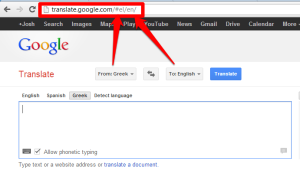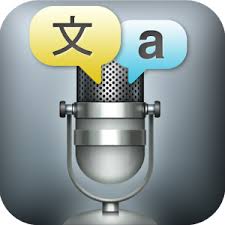Google Translate
 Google Translate is one of those services that many people like to mock until they need it, when it becomes their best friend in the whole wide world. A machine translation service from Google, it uses an algorithm based on statistical analysis to translate text from a source language to a destination language.
Google Translate is one of those services that many people like to mock until they need it, when it becomes their best friend in the whole wide world. A machine translation service from Google, it uses an algorithm based on statistical analysis to translate text from a source language to a destination language.
It currently supports over 70 languages, and has been adding a few each year since its inception. Translation between two languages when one of them is not English is possible, although the algorithm does have to go through English in order to get an end result. This means the source text get translated twice by the time a solution is generated, which could leave room for a lot of errors.
As Google Translate doesn’t take into account grammar rules, translation results are sometimes very peculiar. Particular issues have been identified when it comes to word order, when the translator could in fact invert the meaning of a sentence and come up with the exact opposite. The subject performing the action in the source sentence sometimes becomes the object upon which the action is performed.
Gender has caused many issues for Google Translate. As its algorithm chooses the most likely word for the translation, some outputs in languages with gender specific verb forms offered rather sexist results. For example, the phrase “I cook” would be translated into the feminine version, while “I drive” would be masculine. This particularity of the algorithm generated a lot of comments, especially in Israel where Google was forced to change all translations into Hebrew to automatically result in the masculine form in order to avoid claims it was being deliberately sexist.
 A number of languages featured on Google Translate also have a text-to-speech function enabled, where a voice reads out loud short bits of text. For widely spoken languages, the voice varies according to the region the user is in when logging in the request. In English for example, for requests from the United States and a few other select countries, Google Translate uses a female voice with a General American accent. For a request generated from Europe, the voice is that of a male with a British Accent. Google Translate is also integrated with Chrome, the web browser from Google. It offers automated translations for web pages as the user surfs the web and stumbles upon sites in foreign languages. While the translations may not be perfect, they are usually good enough to get an overview of the text.
A number of languages featured on Google Translate also have a text-to-speech function enabled, where a voice reads out loud short bits of text. For widely spoken languages, the voice varies according to the region the user is in when logging in the request. In English for example, for requests from the United States and a few other select countries, Google Translate uses a female voice with a General American accent. For a request generated from Europe, the voice is that of a male with a British Accent. Google Translate is also integrated with Chrome, the web browser from Google. It offers automated translations for web pages as the user surfs the web and stumbles upon sites in foreign languages. While the translations may not be perfect, they are usually good enough to get an overview of the text.
